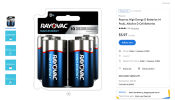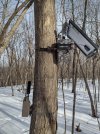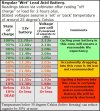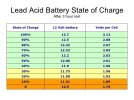The more I think about it, if you cut bottom of bucket in half, leaving enough of sides to hold panel. Now invert, bucket bottom is now top, cut the half circle top into pie shapes, bend them up making tabs that can be attached to tree with screws. Next find something to prop between bucket and tree to hold panel at angle desired to match sun angle. If it's attached and pivots to bucket, then just move it up or down tree to adjust angle. If I could draw, I'd attach image in my head. Could additionally add support(s) across bucket, like on a kite, to reduce arch to more like 100 to 120 degrees. (Full one half bucket would be 180°)







